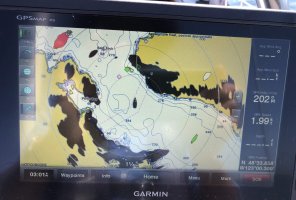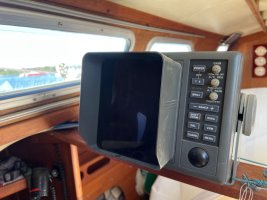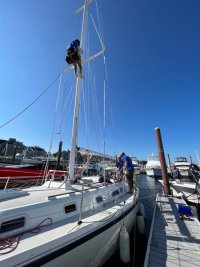Jeff,
Your "real world" test is kind of similar to what our local shop advised me to try. Seeing some slight (but reproducible) deflection, I opted out of the two models that I tried with their magnetic doors, and went with the model with the friction catch door. No compass movement observed with the chosen model.
My reasoning was that, from reading up on compass behavior, magnetic interference varies with the tilt of the card, and therefore the position of the needle inside. Since I had the option of no magnet vs magnet, I could opt for the one with least chance of interference. As you point out, local cruising does not make the use of the ship's compass absolutely vital anyway. (My words, not yours.) Being recreational boaters, 99% of the time we can opt to stay in port if visibility is below our own "worry threshold"...

Further, to flog the mostly-dead magnetic horse, those warnings buried deeply in the install manual for these devices are first based on their lab testing and then very likely modified at the behest of their liability lawyers. An admittedly cynical guess is that the marketers were equally involved and the stated number of inches distance from a compass was shaved down to less than optimal. Whatever 'optimal' means.
After all, they do have to plan for a possible legal action from your surviving relatives after their device "may" have caused your death against a rip rap jetty on a moonless night. And, they have more money to spend on billable hours by a factor of 100X, than us boaters can muster.
Thanks again, and your test echos what I have sometimes contemplated trying to do.




